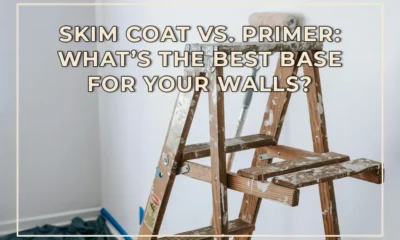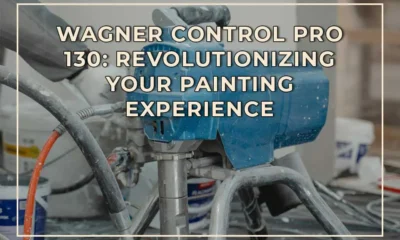Home Storage & Organization
DIY Walk-In Closets: Design, Build, and Organize for Maximum Space and Style
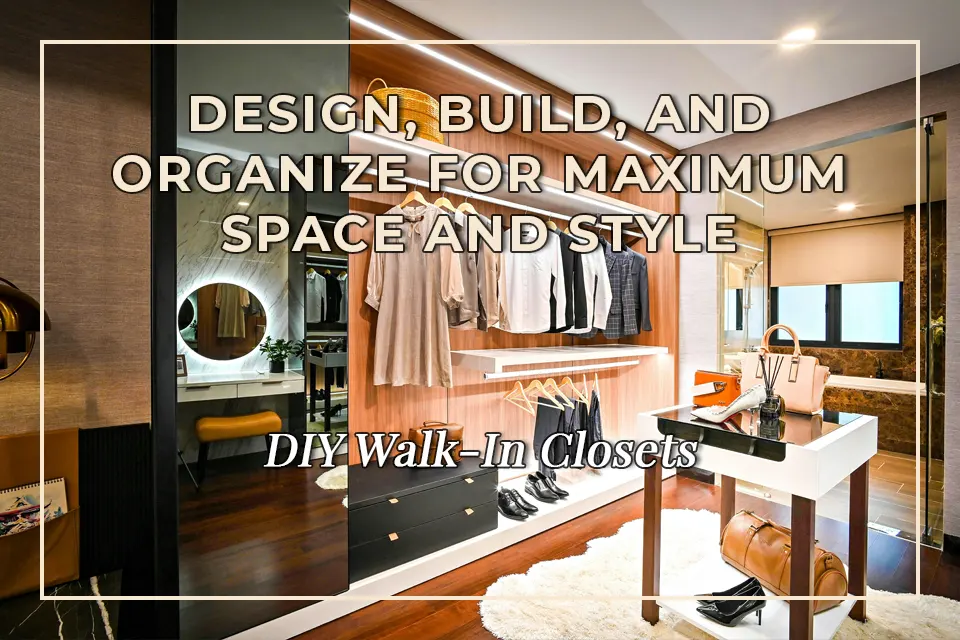
A walk-in closet is a spacious storage area that allows individuals to organize and access their clothing, accessories, and personal items conveniently. Beyond mere storage, these closets can serve as personalized dressing rooms, enhancing both functionality and the aesthetic appeal of a home. Designing and building a walk-in closet can be a rewarding DIY project, offering customization to fit specific needs and preferences.
Benefits of a Walk-In Closet
Walk-in closets offer numerous advantages that go beyond simple storage solutions. They provide ample space to organize clothing, shoes, and accessories, reducing clutter in bedrooms and other living areas. With everything neatly arranged and visible, selecting outfits becomes more efficient, saving time during daily routines.
Additionally, walk-in closets can serve as private dressing areas, offering a secluded space to try on clothes and prepare for the day. This added privacy is particularly beneficial in shared living situations. Moreover, a well-designed walk-in closet can increase the value of a home, appealing to potential buyers who appreciate organized and spacious storage solutions.
Planning Your Walk-In Closet
Before embarking on the construction of a walk-in closet, careful planning is essential. Begin by assessing the available space and determining the dimensions of the closet. Consider factors such as the room’s layout, existing structures, and how the new closet will integrate with the overall design of your home.
Handmade Haven
Next, identify your storage needs. Take inventory of your clothing, shoes, and accessories to understand the types and amounts of storage required. This assessment will help in designing a closet that accommodates all your items while allowing for future additions.
The Home Depot
Establishing a budget is also crucial. Determine how much you’re willing to invest in the project, keeping in mind costs for materials, tools, and any professional assistance you might need. A clear budget will guide your choices in materials and design features, ensuring the project remains financially manageable.
Designing Your Walk-In Closet
The design phase is where you can tailor the closet to your specific preferences and lifestyle. Start by creating a layout that optimizes the use of space. Incorporate a mix of hanging rods, shelves, drawers, and cubbies to accommodate various items. For instance, double-hang sections are ideal for shirts and pants, while long-hang sections accommodate dresses and coats. Shelving units can house folded clothes, shoes, and accessories.
Consider incorporating an island in the center of the closet if space permits. An island provides additional storage and a surface for folding clothes or laying out outfits. Including seating, such as a bench or ottoman, adds comfort and convenience, making the space more functional.
Lighting is a critical aspect of closet design. Proper illumination ensures that all items are easily visible, enhancing the overall usability of the space. Incorporate a combination of overhead lighting and task lighting, such as LED strips under shelves, to eliminate shadows and highlight specific areas.
Selecting Materials and Tools
Choosing the right materials and tools is vital for the durability and appearance of your walk-in closet. Common materials include plywood, MDF (medium-density fiberboard), and solid wood. Plywood and MDF are cost-effective and versatile, making them popular choices for shelving and cabinetry. Solid wood offers a premium look and feel but comes at a higher cost.
For hardware, select sturdy rods, brackets, and drawer slides that can support the weight of your clothing and accessories. Investing in quality hardware ensures the longevity and functionality of the closet.
Essential tools for the project may include a measuring tape, level, drill, saw, and sander. Having the right tools on hand will facilitate precise measurements and cuts, contributing to a professional-looking finish.
Building the Walk-In Closet
With a solid plan and materials in place, you can begin the construction of your walk-in closet. Start by preparing the space, which may involve clearing out the area, removing existing fixtures, and repairing walls or floors as needed. Ensure that the space is clean and level before proceeding.
Next, install the framework for the shelving and hanging units. Begin with the vertical supports, securing them to the walls and floor. Then, add horizontal shelves and rods, ensuring they are level and properly anchored. It’s advisable to attach units to wall studs for maximum stability.
As you build, periodically step back to assess the progress and make adjustments as necessary. Pay attention to details such as aligning edges and ensuring that all components are securely fastened.
Organizing and Personalizing Your Closet
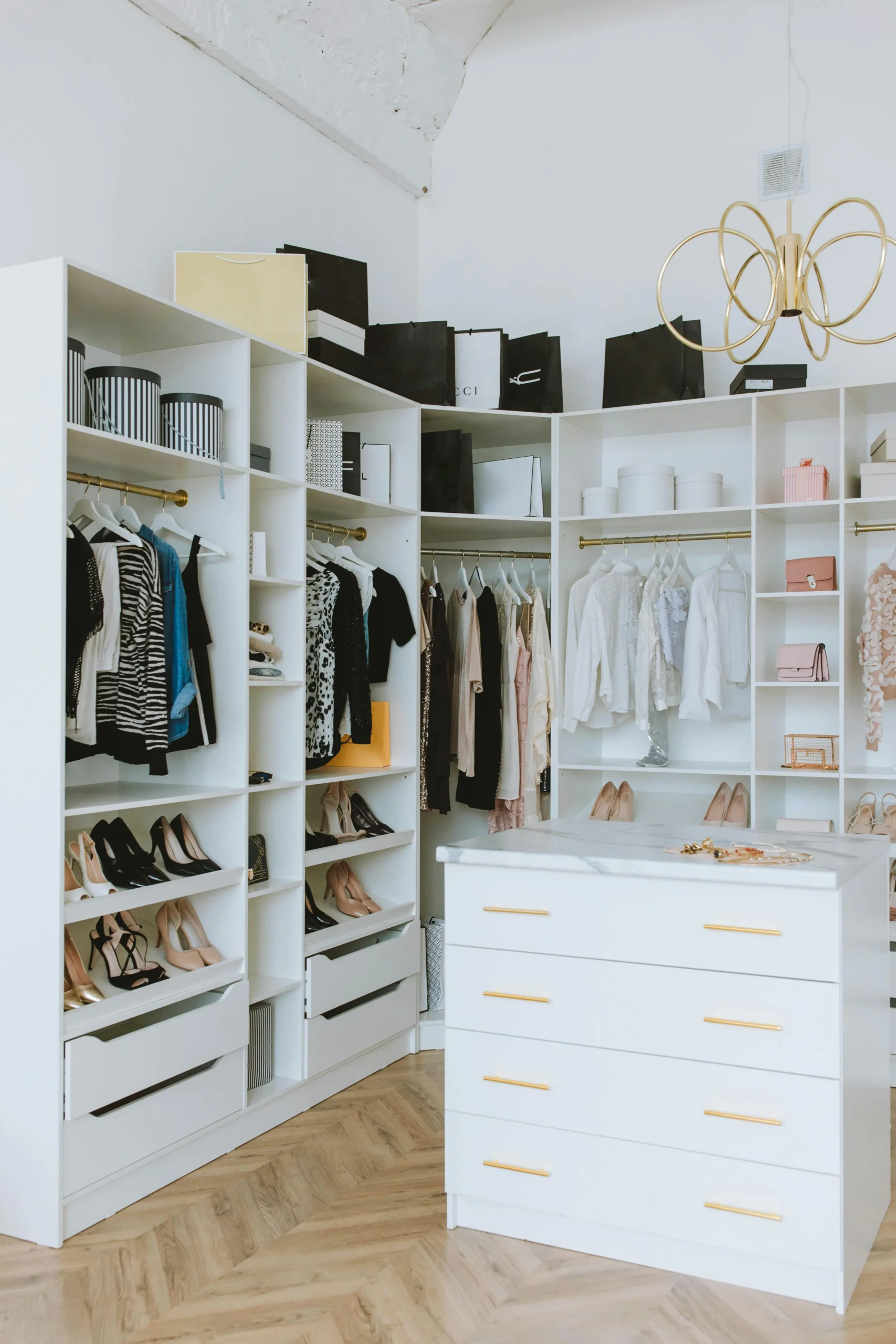
Once construction is complete, organizing your belongings effectively will maximize the utility of the walk-in closet. Group similar items together, such as separating work attire from casual wear. Utilize storage solutions like bins, baskets, and dividers to keep smaller items organized and easily accessible.
Personalize the space to reflect your style and preferences. Consider painting the walls in a color that complements your bedroom or adding decorative elements like artwork or a stylish rug. These touches can transform the closet from a simple storage area into a pleasant and inviting space.
Conclusion
Designing and building a walk-in closet is a fulfilling project that enhances the organization and functionality of your home. By carefully planning the layout, selecting appropriate materials, and adding personal touches, you can create a space that meets your storage needs and reflects your personal style. Whether you’re an experienced DIY enthusiast or a novice, constructing a walk-in closet is an achievable endeavor that adds value and enjoyment to your living space.
FAQs
- How much space is needed for a walk-in closet?
The required space for a walk-in closet varies based on individual needs and the desired layout. A small walk-in closet can function effectively with dimensions as compact as 4×4 feet, while larger designs may require 8×10 feet or more for additional storage and comfort. - What is the best layout for a walk-in closet?
The ideal layout depends on the available space and storage requirements. Common layouts include L-shaped, U-shaped, and straight-line designs. Incorporating shelves, hanging rods, drawers, and open compartments ensures efficient organization. - Can I build a walk-in closet on a budget?
Yes! Using budget-friendly materials like MDF or plywood, repurposing furniture, and opting for DIY shelving solutions can significantly reduce costs. Planning and measuring carefully also help avoid unnecessary expenses. - How can I maximize storage in a small walk-in closet?
Utilize vertical space by installing shelves up to the ceiling, use multi-level hanging rods, and incorporate storage bins and drawer organizers. Sliding doors or curtains instead of hinged doors can also save space. - What kind of lighting is best for a walk-in closet?
A combination of overhead lighting and LED strip lights under shelves provides optimal visibility. Warm white or daylight LED bulbs help in color accuracy when selecting outfits. Motion-sensor lights add convenience and energy efficiency.

Home Storage & Organization
DIY Display Cabinets: Stylish Storage Ideas for Every Home and Budget
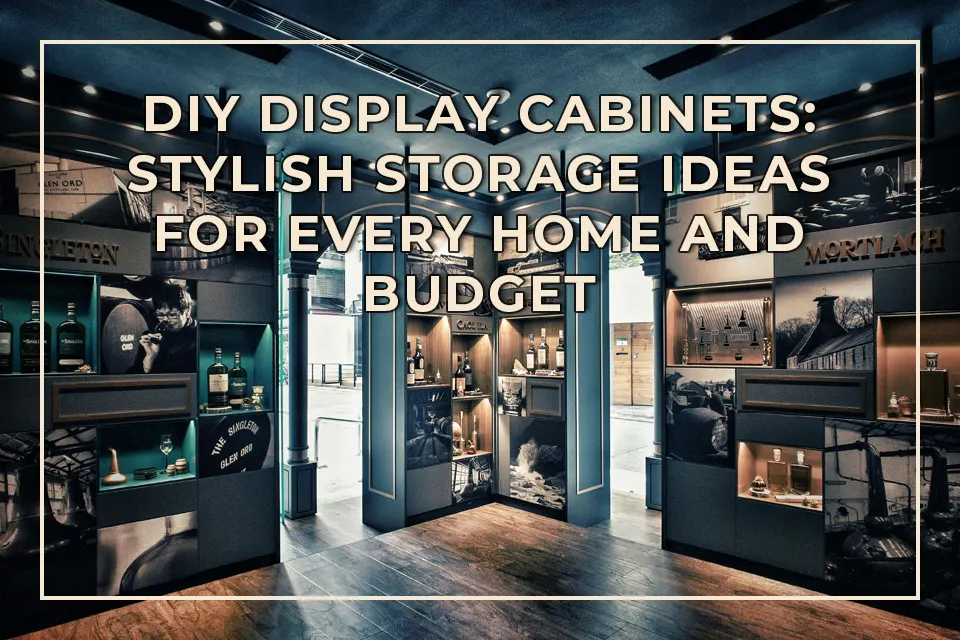
Display cabinets blend functionality with style, offering a perfect solution for showcasing treasured items while enhancing home decor. Whether you’re a DIY enthusiast or embarking on a home improvement project, understanding the nuances of display cabinets can transform your living space.
Understanding Display Cabinets
Display cabinets are furniture pieces designed to exhibit items such as collectibles, artwork, or memorabilia. They typically feature glass panels to protect contents from dust while allowing visibility. These cabinets come in various styles, sizes, and materials, catering to diverse aesthetic preferences and functional needs.
In home improvement, display cabinets serve both decorative and practical purposes. They can act as focal points in a room, reflecting personal taste and style. Additionally, they provide organized storage, helping to declutter spaces while keeping cherished items accessible and visible.
Types of Display Cabinets
Several types of display cabinets are available, each suited to different settings and purposes:
- Wall-mounted cabinets: Ideal for small spaces, these cabinets save floor space and are perfect for displaying lightweight items.
- Freestanding cabinets: These versatile units can be placed anywhere in a room and often offer more storage space.
- Corner cabinets: Designed to fit into room corners, they maximize space utilization and add a unique aesthetic touch.
- Curio cabinets: Typically tall and narrow with glass sides, curio cabinets are perfect for displaying collectibles and antiques.
When choosing a display cabinet, consider the items you plan to showcase, the available space, and the overall room decor to ensure a harmonious integration.
Materials and Finishes
Display cabinets are crafted from various materials, each offering distinct advantages:
- Wood: Offers a classic and warm aesthetic, suitable for traditional or rustic interiors.
- Metal: Provides a sleek and modern look, often used in contemporary designs.
- Glass: Allows full visibility of displayed items and adds a touch of elegance.
Finishes can range from natural wood stains to painted surfaces, enabling customization to match existing furniture and decor. Selecting the right material and finish enhances the cabinet’s appearance and ensures durability.
DIY Display Cabinet Projects
Embarking on a DIY display cabinet project allows for personalization and can be a rewarding experience. Begin by determining the cabinet’s purpose and the items it will house. Sketch a design, considering dimensions, materials, and features like shelves or lighting.
Gather necessary tools and materials, such as wood panels, glass panes, screws, and hinges. Follow step-by-step guides or tutorials to assemble the cabinet, ensuring structural integrity and aesthetic appeal. DIY projects not only save costs but also provide a sense of accomplishment and a unique piece tailored to your needs.
Integrating Technology
Modern display cabinets can incorporate technology to enhance functionality and user experience:
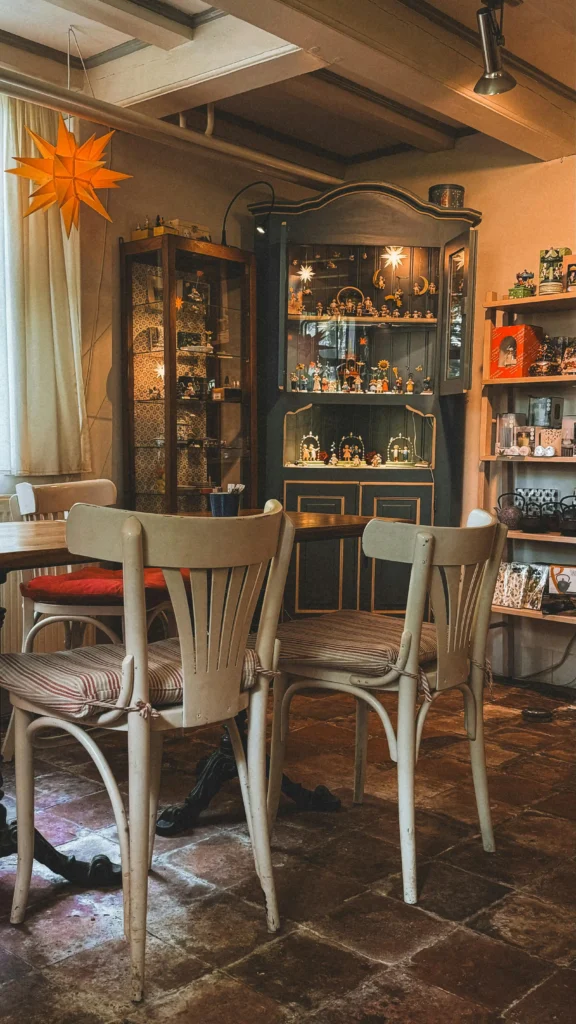
- LED lighting: Illuminates displayed items, highlighting their features and adding ambiance.
- Smart locks: Provide security for valuable items, allowing access through digital keys or biometric systems.
- Climate control: Maintains optimal temperature and humidity levels, preserving sensitive items like antiques or artworks.
Integrating these technologies ensures the safety and longevity of displayed items while adding modern conveniences.
Styling Tips
To make the most of your display cabinet:
- Curate thoughtfully: Display items with a common theme or color palette for a cohesive look.
- Balance: Arrange items of varying heights and sizes to create visual interest.
- Layering: Place items at different depths to add dimension.
- Negative space: Avoid overcrowding; leaving space between items enhances their prominence.
Regularly updating the display keeps it fresh and allows for seasonal or thematic changes.
Maintenance and Care
Proper maintenance ensures the longevity and appearance of your display cabinet:
- Cleaning: Use appropriate cleaners for the cabinet’s material. For glass, a vinegar-water solution can prevent streaks.
- Dusting: Regularly dust shelves and items to maintain clarity and prevent buildup.
- Inspection: Periodically check for any structural issues, such as loose hinges or shelves, and address them promptly.
Consistent care preserves both the cabinet and its contents, ensuring they remain in pristine condition.
Top Display Cabinet Manufacturers in the USA
When it comes to purchasing high-quality display cabinets, choosing a trusted manufacturer ensures durability, functionality, and design excellence. Here are five of the best display cabinet manufacturers in the USA that are known for their craftsmanship and customer satisfaction:
1. Closet America
Based in Maryland, Closet America is a leading name in custom cabinetry and storage solutions. They offer beautifully crafted display cabinets that are fully customizable to fit any space. Known for precision engineering and elegant designs, their cabinets are ideal for modern homes and DIY renovations.
2. Hooker Furniture
With decades of experience in the furniture industry, Hooker Furniture is known for its premium display cabinets that range from traditional to contemporary styles. Their solid wood craftsmanship and attention to detail make them a popular choice for collectors and interior design enthusiasts.
3. Canadel
A family-owned company based in Quebec with a strong presence in the U.S., Canadel specializes in customizable furniture, including display cabinets. Their products are handcrafted and made from solid birch, offering both quality and customization options.
4. Ethan Allen
Ethan Allen is a well-established American brand offering luxury furniture, including stunning display and curio cabinets. Their designs blend classic elegance with modern utility, and they provide extensive customization options in finishes and configurations.
5. Howard Miller
Known for its heritage in clockmaking, Howard Miller also produces high-end curio and display cabinets. Their cabinets are popular for showcasing collectibles and heirlooms, with built-in lighting and premium glass doors for maximum visibility.
Conclusion
Display cabinets are versatile additions to any home, offering both aesthetic and functional benefits. Whether opting for a DIY project or purchasing a ready-made piece, understanding the various types, materials, and styling options allows for a personalized and effective display solution. Incorporating technology and maintaining the cabinet ensures it remains a cherished part of your home for years to come.
FAQs
1. What are some budget-friendly materials for building a display cabinet?
Plywood and MDF (Medium-Density Fiberboard) are cost-effective materials that are easy to work with and can be finished to mimic more expensive woods.
2. How can I childproof my display cabinet?
Install safety locks on doors, use tempered glass to prevent breakage, and place heavier items on lower shelves to minimize risks.
3. Can I convert an old bookshelf into a display cabinet?
Yes, by adding glass doors and interior lighting, an old bookshelf can be transformed into an attractive display cabinet.
4. What lighting options are best for display cabinets?
LED strip lights or puck lights are energy-efficient options that provide ample illumination without generating excessive heat
Home Storage & Organization
Home Office Cabinets: Smart Storage Solutions for an Organized and Productive Workspace
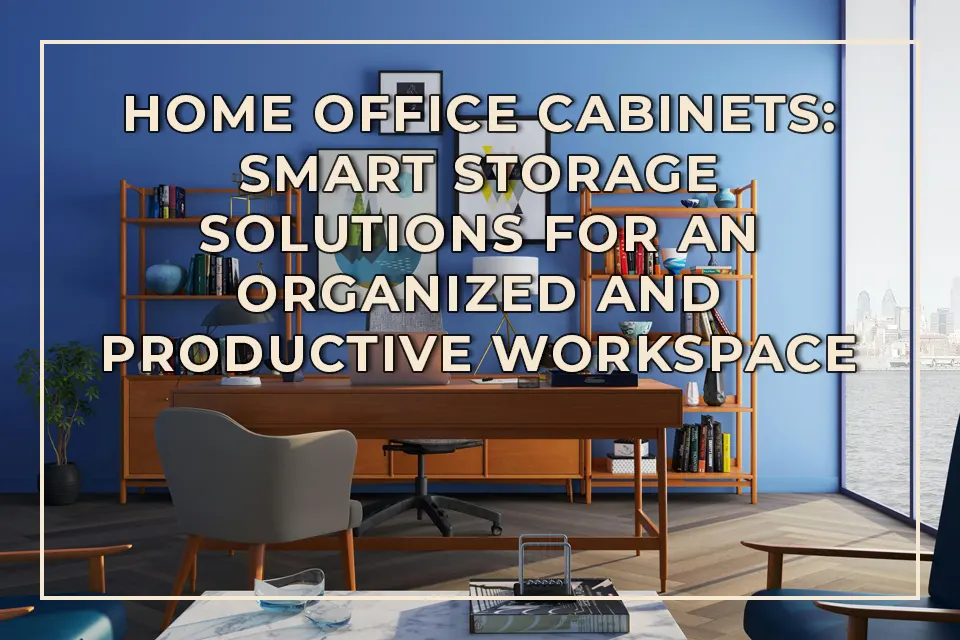
Designing a functional and organized home office is essential for productivity, and incorporating well-planned cabinets can significantly enhance your workspace. This article explores various aspects of home office cabinets, including design considerations, material choices, DIY installation tips, organization strategies, and integrating technology.
Importance of Home Office Cabinets
Home office cabinets provide essential storage solutions, helping to keep your workspace tidy and free from clutter. A well-organized office can boost productivity by ensuring that all necessary items are easily accessible. Cabinets also contribute to the overall aesthetics of the room, creating a professional and comfortable environment. By thoughtfully selecting and arranging cabinets, you can optimize your workspace to suit your specific needs and preferences.
Choosing the Right Cabinet Style
Selecting a cabinet style that complements your home office decor is crucial. Shaker-style cabinets, known for their clean lines and simplicity, offer a timeless look that fits various interior designs. For a more traditional feel, louvered cabinets with horizontal wooden slats can add character and a cottage-like charm to your workspace. Your choice should reflect your personal taste and the overall aesthetic of your home office.
Material Selection for Durability and Aesthetics
The materials used for your cabinets affect both their durability and appearance. Solid wood cabinets are sturdy and offer a classic look but can be more expensive. Plywood is a cost-effective alternative that provides strength and versatility, making it a popular choice for DIY projects. Medium-density fiberboard (MDF) is another option, offering a smooth surface ideal for painting. Consider the balance between quality, cost, and the desired finish when selecting materials for your cabinets.
DIY Installation of Built-In Cabinets
Installing built-in cabinets can be a rewarding DIY project that adds value to your home office. Begin by measuring your space accurately to ensure a proper fit. Construct the cabinet boxes using your chosen materials, ensuring they are square and level. Secure the cabinets to the wall studs for stability, and add trim or molding to achieve a seamless, built-in appearance. This process requires careful planning and attention to detail but can result in a customized and functional workspace.
Organizing Your Cabinets for Maximum Efficiency
Effective organization within your cabinets enhances productivity by keeping essential items within reach. Use drawer dividers to separate office supplies and prevent clutter. Adjustable shelving allows you to accommodate items of varying sizes, providing flexibility as your storage needs change. Labeling shelves and drawers can also help maintain order and make it easier to locate items quickly. Implementing these strategies creates a more efficient and user-friendly workspace.
Integrating Technology into Cabinet Design

Modern home offices often require the integration of technology into cabinet design. Incorporate built-in charging stations to keep devices powered and reduce visible cords. Cable management systems can help organize wires and prevent tangling. Additionally, consider installing adjustable lighting within cabinets to illuminate work areas and reduce eye strain. These technological enhancements contribute to a more organized and efficient workspace.
Top 5 Home Office Cabinet Manufacturers in the USA
When investing in high-quality home office cabinets, choosing a reputable manufacturer ensures durability, functionality, and style. Here are five of the best home office cabinet manufacturers in the USA:
- Closet America – Known for custom-built storage solutions, Closet America offers high-quality, space-efficient home office cabinets with premium craftsmanship.
- California Closets – This company specializes in custom-designed cabinetry, providing elegant and practical storage solutions tailored to your workspace needs.
- The Container Store (Elfa & Custom Closets) – Offering both modular and custom home office cabinet systems, The Container Store provides flexible solutions that fit various styles and budgets.
- Wellborn Cabinet, Inc. – A trusted name in cabinetry, Wellborn Cabinet, Inc. manufactures durable and stylish office cabinets with a wide range of finishes and materials.
- Bush Business Furniture (BBF) – This manufacturer provides ready-to-assemble and professional-grade office cabinetry, known for affordability and durability.
Each of these companies offers unique benefits, allowing you to find the perfect home office cabinets to enhance your productivity and organization.
Conclusion
Investing time and effort into designing and organizing home office cabinets can significantly enhance your productivity and comfort. By carefully selecting styles and materials, considering DIY installation, implementing effective organization strategies, and integrating technology, you can create a workspace tailored to your needs. A well-planned home office fosters efficiency and creates an environment where you can work effectively and comfortably.
FAQs
1. How can I maximize storage in a small home office?
Utilize vertical space by installing tall cabinets or shelves. Opt for multifunctional furniture, such as desks with built-in storage, to make the most of limited space.
2. What are some budget-friendly materials for DIY cabinets?
Plywood and MDF are cost-effective materials that offer durability and a smooth surface for painting or finishing, making them suitable for DIY cabinet projects.
3. How do I ensure my DIY cabinets are securely installed?
Secure cabinets to wall studs using appropriate anchors and fasteners. Ensure all units are level and properly aligned to prevent instability.
4. Can I integrate smart home devices into my office cabinets?
Yes, you can incorporate smart lighting, built-in speakers, or charging stations into your cabinets to enhance functionality and convenience.
5. How often should I reorganize my home office cabinets?
Regularly assess your storage needs and reorganize as necessary to maintain an efficient workspace. A quarterly review can help keep your office organized and clutter-free.
Home Storage & Organization
Garage Cabinets: The Ultimate Guide to Organizing, Installing, and Maintaining Your Storage Space

Garage cabinets are essential for organizing tools, equipment, and other items, transforming cluttered spaces into functional areas. They come in various materials and designs, catering to different needs and preferences. This article explores the benefits, types, materials, installation tips, and maintenance of garage cabinets, providing a comprehensive guide for homeowners.
Benefits of Garage Cabinets
Installing garage cabinets offers multiple advantages:
- Enhanced Organization: Proper storage solutions help categorize and store items systematically, making them easily accessible and reducing clutter.
- Increased Safety: Storing tools and hazardous materials in cabinets minimizes the risk of accidents, especially in households with children.
- Improved Aesthetics: A well-organized garage with neatly arranged cabinets enhances the overall appearance of the space
- Space Optimization: Cabinets utilize vertical space, freeing up floor area for vehicles or other activities.
Types of Garage Cabinets
Garage cabinets come in various styles to suit different storage needs:
- Base Cabinets: These sit on the floor and often support a countertop, providing storage and workspace.
- Wall-Mounted Cabinets: Attached to the walls, these cabinets save floor space and keep items at eye level.
- Tall Cabinets: Also known as pantry cabinets, they offer ample vertical storage for larger items.
- Modular Cabinets: These customizable units can be arranged in various configurations to fit specific spaces and needs.
Materials Used in Garage Cabinets
Selecting the right material is crucial for durability and functionality:
- Metal Cabinets: Known for their strength and longevity, metal cabinets, especially those made of steel, can hold substantial weight and are resistant to pests.
- Wood Cabinets: Offering a classic look, wood cabinets can be customized easily but may require treatment to prevent damage from moisture and pests.
- Plastic Cabinets: Lightweight and resistant to rust and corrosion, plastic cabinets are cost-effective but may not support heavy loads as effectively as metal or wood.
DIY vs. Professional Installation
Deciding between installing cabinets yourself or hiring a professional depends on various factors:
- DIY Installation: This approach can save money and offers a sense of accomplishment. However, it requires time, tools, and a certain skill level. Simple installations, like assembling freestanding units, are more suited for DIY, while complex setups may be challenging.
- Professional Installation: Hiring experts ensures a precise and quick setup, often accompanied by warranties. This option is ideal for custom or extensive installations but comes with higher costs due to labor charges.
Cost Considerations
The cost of garage cabinets varies based on size, material, and installation method:
- Prefabricated Cabinets: These are generally more affordable, with prices ranging from a few hundred to a couple of thousand dollars, depending on quality and size.
- Custom Cabinets: Tailored solutions offer optimal space utilization and personalization but come at a higher price, often ranging from $2,500 to $8,000 or more.
- Installation Costs: Professional installation adds to the expense, with labor costs varying based on complexity and region.
Maintenance Tips
Proper maintenance extends the lifespan of garage cabinets:
- Regular Cleaning: Wipe down surfaces to prevent dust and grime buildup.
- Moisture Control: Ensure the garage is well-ventilated to prevent moisture damage, especially for wood cabinets.
- Inspect for Damage: Periodically check for signs of wear, such as rust on metal cabinets or warping in wood, and address issues promptly.
- Lubricate Hardware: Keep hinges and drawer slides functioning smoothly by applying appropriate lubricants.
Top 5 Mudroom Cabinet Manufacturers in the USA
A well-designed mudroom enhances organization and serves as a stylish transition between the outdoors and your home’s interior. Choosing the right cabinets is crucial for creating a functional and aesthetically pleasing space. Here are five leading mudroom cabinet manufacturers in the USA:
- 1. Closet America
Based in Landover, Maryland, Closet America specializes in custom storage solutions, including mudroom cabinets. They offer personalized designs tailored to individual needs, featuring durable materials and meticulous craftsmanship. Their process includes a free design consultation, 3D modeling, and professional installation, ensuring a seamless experience from start to finish. - 2. KraftMaid
KraftMaid provides fully assembled mudroom locker cabinets designed for convenience and efficiency. Their products offer out-of-the-box storage solutions that save time and labor during installation. With a focus on quality and design, KraftMaid’s cabinets are ideal for organizing entryways and mudrooms. - 3. Wellborn Cabinet
Established in 1961, Wellborn Cabinet is renowned for its high-quality cabinetry. They offer a range of mudroom storage solutions that combine functionality with aesthetic appeal. Their commitment to craftsmanship ensures durable and stylish cabinets suitable for any home. - 4. Closet Factory
Closet Factory specializes in custom-designed mudrooms that provide efficient, family-friendly storage options. Their cabinets offer a transitional space between the outdoors and the home, helping to keep living areas clean and organized. With personalized designs, they cater to the unique needs of each household. - 5. Mod Cabinetry
Mod Cabinetry offers modern, customizable mudroom cabinets with a focus on European frameless construction. Their products are designed to maximize storage while maintaining a sleek, contemporary look. With options for semi-custom designs, they provide flexibility to suit various spaces and preferences.
Selecting the right manufacturer depends on your specific needs, budget, and design preferences. Each of these companies offers unique features and services to help you create the perfect mudroom for your home.
Conclusion
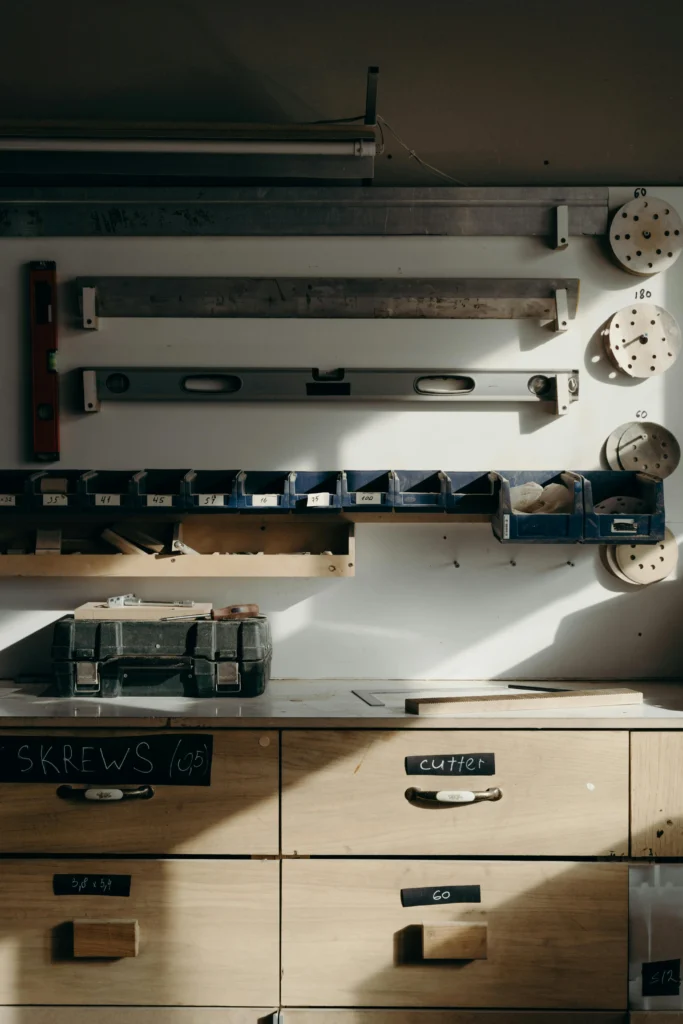
Garage cabinets are a valuable addition to any home, enhancing organization, safety, and aesthetics. By understanding the different types, materials, and installation options, homeowners can make informed decisions that suit their needs and budget. Regular maintenance ensures these cabinets remain functional and attractive for years to come.
FAQs
- What is the best material for garage cabinets?
The ideal material depends on your specific needs. Metal cabinets offer durability and strength, wood provides a classic look with customization options, and plastic is lightweight and resistant to rust. - Can I install garage cabinets myself?
Yes, DIY installation is possible, especially for simpler units. However, it requires time, tools, and some skill. For complex or custom installations, professional assistance may be more suitable. - How do I prevent moisture damage to my garage cabinets?
Ensure proper ventilation in the garage, use moisture-resistant materials or finishes, and consider installing a dehumidifier if necessary. - Are custom garage cabinets worth the investment?
Custom cabinets offer tailored solutions that maximize space and meet specific storage needs, adding value to your home. While more expensive, they can be a worthwhile investment for long-term use. - How often should I inspect and maintain my garage cabinets?
- It’s advisable to inspect and clean your cabinets at least twice a year to ensure they remain in good condition and address any issues promptly.

 DIY Closet2 years ago
DIY Closet2 years agoHow to troubleshoot and reset the red light on your Aquaguard AG 3000E

 DIY Closet2 years ago
DIY Closet2 years agoHow to Install a Drop-In Sink Without Clips: A Step-by-Step Guide

 Bug Fixing2 years ago
Bug Fixing2 years agoUnderstanding the Cost of Furnace Collector Box Replacement: What to Expect

 DIY Closet2 years ago
DIY Closet2 years agoPergola Design: Understanding the Maximum Span for 6×6 Beams

 DIY Closet2 years ago
DIY Closet2 years agoThe Best Nails for Luan: A Comprehensive Guide

 Bug Fixing2 years ago
Bug Fixing2 years agoPigtail vs Daisy Chain Outlets: Which is Better for Your Home?

 DIY Closet2 years ago
DIY Closet2 years agoHow to Build a Free Standing 6×6 Post Swing Set: A Step-by-Step Guide

 DIY Closet2 years ago
DIY Closet2 years agoUnderstanding the Benefits of a 400 Amp Meter Base with Two 200 Amp Disconnects










